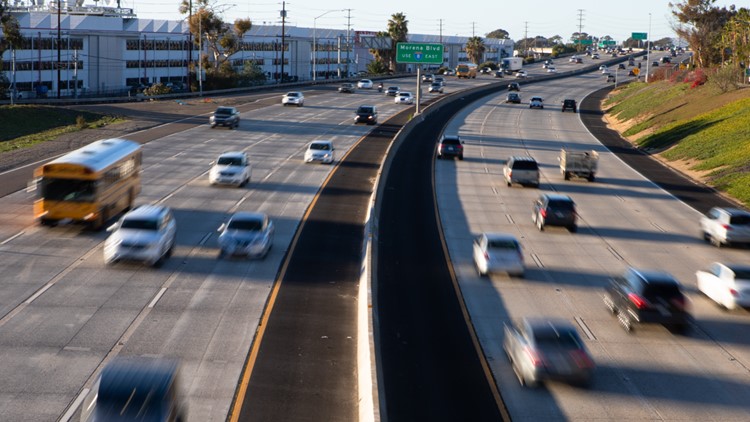SAN DIEGO — Police agencies throughout San Diego County continue to spend thousands of dollars every year on technology that tracks the location of people’s cars, even though the information collected most often has nothing to do with solving crime or protecting the public.
And a monthslong inewsource investigation found that until recently, five police departments across the county have been violating state law by sharing this information with agencies all over the United States. Two of those departments — police in Carlsbad and Coronado — decided to change their policies after questions from inewsource.
They’re called automated license plate readers. For more than a decade, police have been using cameras mounted on top of patrol cars, or fixed objects such as light poles, to capture any license plate that comes into view. They can extract the time, date, location and sometimes a partial image of the vehicle, and automatically compare the plate number to a list of vehicles that police are looking for.
The information is also stored in a searchable database for up to one year, and can be shared with select agencies.
Right now, there are at least 300 cameras peppered throughout the county — from Oceanside to Chula Vista to La Mesa — actively collecting location data on people’s cars. Eight of the county’s 10 local police agencies, including the sheriff, are using the equipment and capturing millions of license plates every year.


Anyone with access to that information could have an unrestricted view into a person’s daily routine and social network, said Vasudha Talla, director of the Immigrants’ Rights Program at the ACLU of Northern California.
“Mass surveillance technology collects the most intimate information about our personal lives,” Talla said. From where a person shops to who they associate with. “Our presence at protests; our presence at mosques. A variety of activity that’s protected by the Constitution.”
That’s why in 2015 state lawmakers strengthened privacy protections for drivers and established strict rules for how police can use the technology, including who has access to the information collected.
The idea was that this technology is supposed to assist local law enforcement with crimes committed locally, said former state Sen. Jerry Hill, a Democrat from San Mateo who sponsored the law. It was supposed to prevent unfettered access to private information and prohibit police from embarking on fishing expeditions.
“Law enforcement certainly has a tough job and we want them to succeed at their job and their mission, but how they get there needs some serious civilian oversight,” Hill said in an interview with inewsource, “or we could have a police state at the end of the day.”

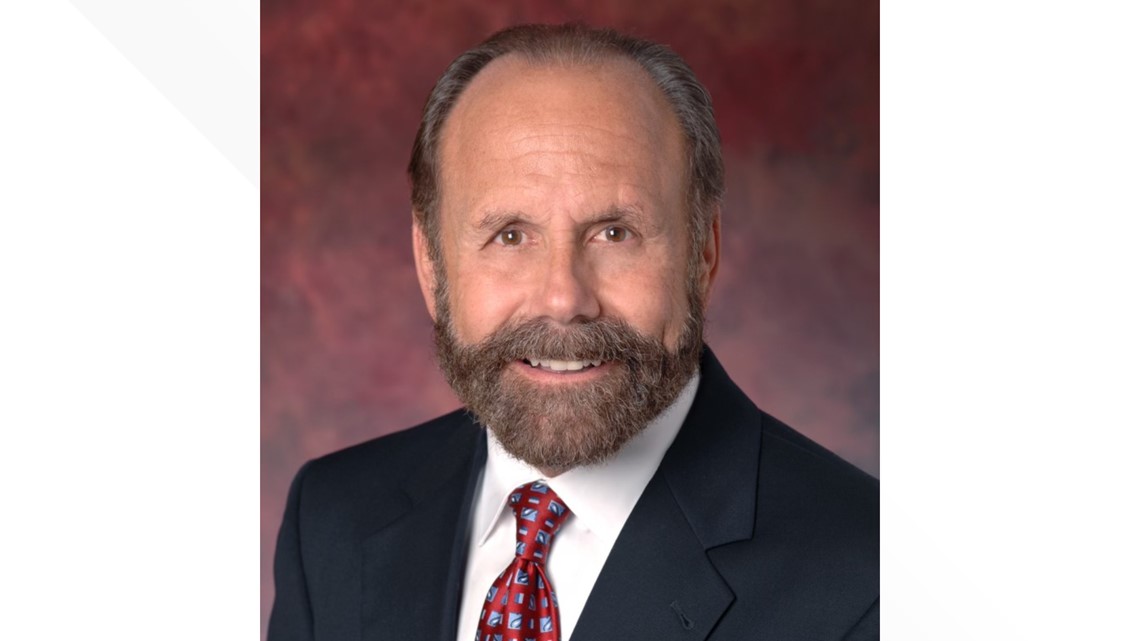
But despite those changes, the state auditor found in 2020 that police are keeping data longer than necessary and sharing it with other agencies that don’t have a need or even a right to access it, all without taking required steps to protect privacy. The audit looked at records from four law enforcement agencies and found that the vast majority of data collected was unrelated to criminal investigations.
Talla is representing activists who filed a lawsuit against the Marin County Sheriff — one of the agencies included in the report — for illegally sharing license plate data with out-of-state and federal agencies, including Border Patrol and Immigration and Customs Enforcement. A Marin County Sheriff spokesperson said the office has made changes since the audit and plans to defend its policy in court.
The problem, Talla said, is that those out-of-state and federal agencies don’t have to follow the same set of rules for how and when private information collected from this technology can be accessed. And there have been multiple reports of police abusing this technology.
An officer in Georgia accepted a bribe to run a woman’s license plate, and a police sergeant in Ohio pleaded guilty to stalking his ex-girlfriend using this equipment, according to an Associated Press analysis in 2016.
Hundreds of others across the country have been disciplined for misusing the data collected from license plate readers. As the auditor’s report says, that’s not to suggest this behavior represents all members of law enforcement — only that safeguards are needed to prevent it.
But there have also been horrible mistakes, such as when local police in Colorado held a woman and four Black kids at gunpoint in a parking lot. Officers had wrongly identified the woman’s SUV license plate as one that matched a stolen out-of-state motorcycle. Charges were never filed against those officers.
Police are likely holding people at gunpoint as a result of false positives more often than the public is aware of, said Laila Aziz, director of operations for Pillars of the Community, a Southeast San Diego nonprofit focused on helping people in the legal system.
“The police need to carefully look at their reliance on technology and how this technology could affect people in the long run,” she said.

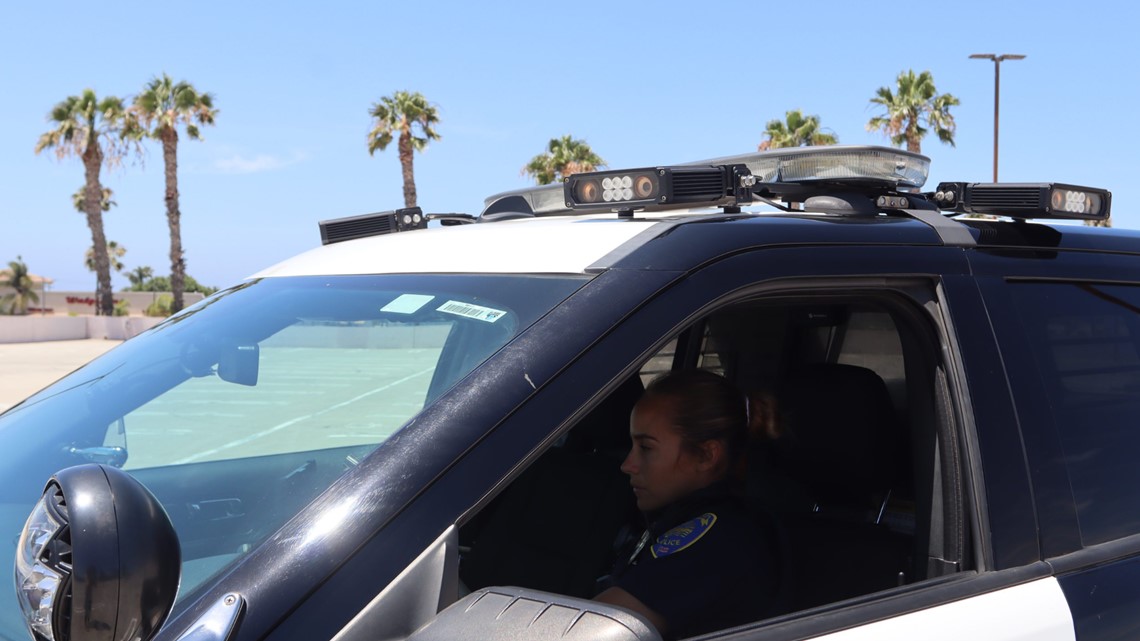
Through the California Public Records Act, inewsource attempted to obtain license plate data from every local police agency in the county. inewsource had hoped to analyze the data to determine how long agencies were holding onto individual records, whose information was being shared beyond the state and how easy it would be to track an individual using the data.
Those requests were denied by every department citing previous State Supreme Court rulings that excluded such data from the public.
Valuable information shared far and wide
Members of law enforcement say license plate readers offer an important investigative tool, and the more information at their fingertips, the more successful they can be in preventing and solving all kinds of crime.
They point to numerous violent crimes that have been solved with the help of this equipment but are often hard-pressed to provide specific details about those arrests. More importantly, officials have said the technology doesn’t collect any personal information, only a photo of a license plate and details about the location.
However, license plates are inherently attached to people. The California Supreme Court wouldn’t allow law enforcement in Los Angeles County to make the data collected there public, saying it would violate privacy if individual license plates were released.
In addition, activists say it’s an indiscriminate data collection effort. They roll out nationwide examples of law-abiding citizens getting victimized thanks to police misconduct or misunderstanding of technology. And according to the 2020 audit, the risk of misusing the technology increases as information is widely distributed.
inewsource found police in Carlsbad, Coronado, Escondido, La Mesa and Oceanside had been sharing location data collected in those jurisdictions with hundreds of other agencies across the country. Small police departments in states like Florida, New York, New Jersey and Illinois have been given access to information about drivers in San Diego County. State law says license plate data can only be shared with agencies in California.

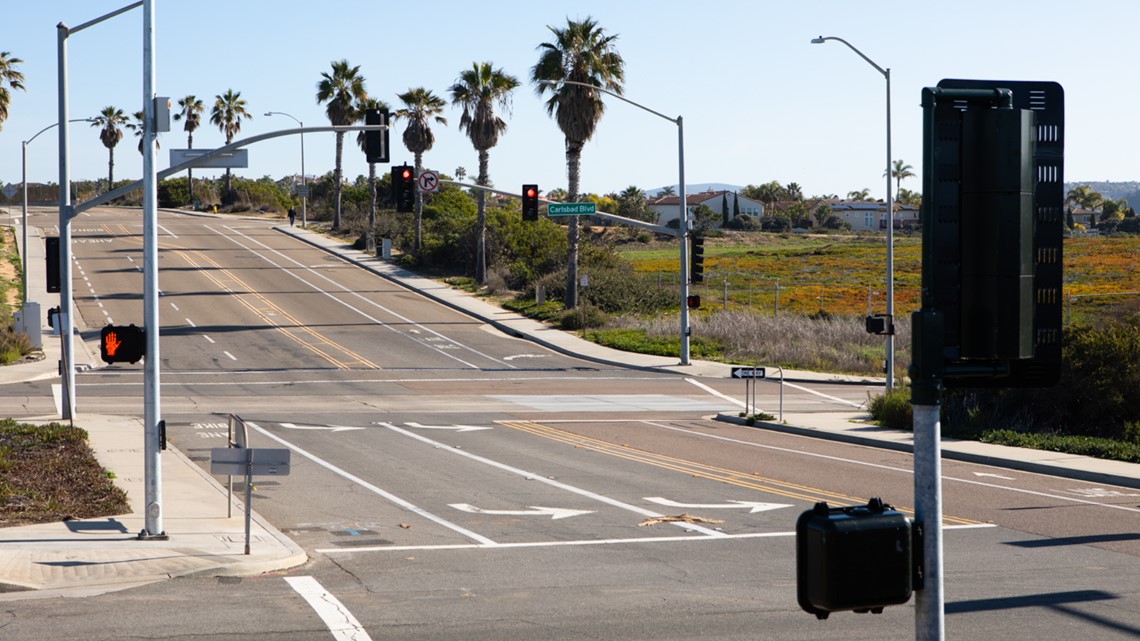
When asked about this, police in Escondido and La Mesa doubled down, saying they weren’t doing anything wrong and refusing to answer questions about why it was necessary. A representative with Oceanside police said the department has stopped sharing its data with “many agencies” without providing proof, and then stopped responding to emails.
Carlsbad police initially expressed a misunderstanding of how the information is shared, and then later changed its policy to share only with California agencies after further questioning.
Coronado’s police chief, Chuck Kaye, quickly responded and said his department decided to change its policy.
“We reevaluated what we were doing and looked at best practices,” Kaye said in an interview. The department ultimately decided to restrict its sharing to only agencies within San Diego County.
Kaye said his biggest concern was making sure other officers had access to information about high-risk people, but sharing data with agencies outside San Diego County “didn’t seem to be needed,” he said.
inewsource had hoped to determine how often an individual driver’s information is being collected and how it’s being used or shared, but the public currently has no way to know. And some people may not even know it’s happening at all.
Only two cities — Carlsbad and Chula Vista — have held meaningful public discussion about this topic. Carlsbad police asked its City Council for permission to expand the program further and Chula Vista has held several public meetings, but only after a reporter found in December 2020 that police were sharing information with ICE and CBP.
In San Diego and El Cajon, there’s no record of the initial purchase of this equipment even going before City Council members for approval. Only after police wanted to expand the program did council members in those cities have an opportunity to sign off, but there wasn’t a public discussion.
“Most people do not have a choice except to drive in many car-dependent communities,” Talla said, “and so they have to subject themselves to this surveillance whether they like it or not.”
‘Whatever the number is, I think we need to invest it’
Police in San Diego County have collectively spent at least $4.6 million — much of it coming from federal grants — to pay for license plate readers as well as services offered from various private companies.
Invoices provided to inewsource show the Escondido Police Department was among the first agencies in the county to secure the technology, paying roughly $30,000 for three cameras in March 2007. Officials there said they would be used to combat auto theft.
Since then, surveillance programs have expanded and spread to every agency in the county. National City stopped using the technology in September 2020 and instead decided to spend money on other priorities, a spokesperson said. Departments have typically spent roughly $50,000 to secure the equipment, records show, not including ongoing costs.
Every other local law enforcement agency in the county, including the sheriff, has an agreement with a company named Vigilant Solutions — the same one used by most police agencies across the state.
In addition to the cost of cameras, they each have to pay up to $20,000 for an annual subscription to the company’s database, which assists in the sharing of information. San Diego police also pay for this service, but all 108 of the department’s cameras are inactive, said Lt. Adam Sharki. He would not answer why the department continues to pay without receiving the full benefit.
But most of these public expenses came without input from residents. It appears the first meaningful discussion about using this equipment happened in March 2017, when Carlsbad police went to the City Council for permission to expand its existing program and buy new equipment for more than $800,000.
During that meeting, Carlsbad police Chief Mickey Williams, who was a captain at the time, told council members that property crime and car thefts had been on the rise and the department was looking for additional tools to deter it, as well as catch those who commit it. Williams said license plate readers might be the solution.
“Hard to put a value on how many crimes are prevented,” he told council members.
Several members of the public weren’t sold, and each expressed concern to council members about mass surveillance.
“Every time I go to Vons over the next year, three times a week, you’re going to capture my license plate and store it for a year,” said Vicky Syage, one of five others who told council members to reject the proposal. “That’s absolutely ludicrous. It goes against everything in our judicial principals. We are innocent in this country until proven guilty.”
But the majority of the council liked what it heard. Council member Keith Blackburn said it was a “no-brainer” and that every patrol car should be outfitted with the equipment. Mayor Matt Hall said the safeguards in place are “more than adequate” to protect privacy. It was approved 4-1, with then-council member Cori Schumacher voting no.

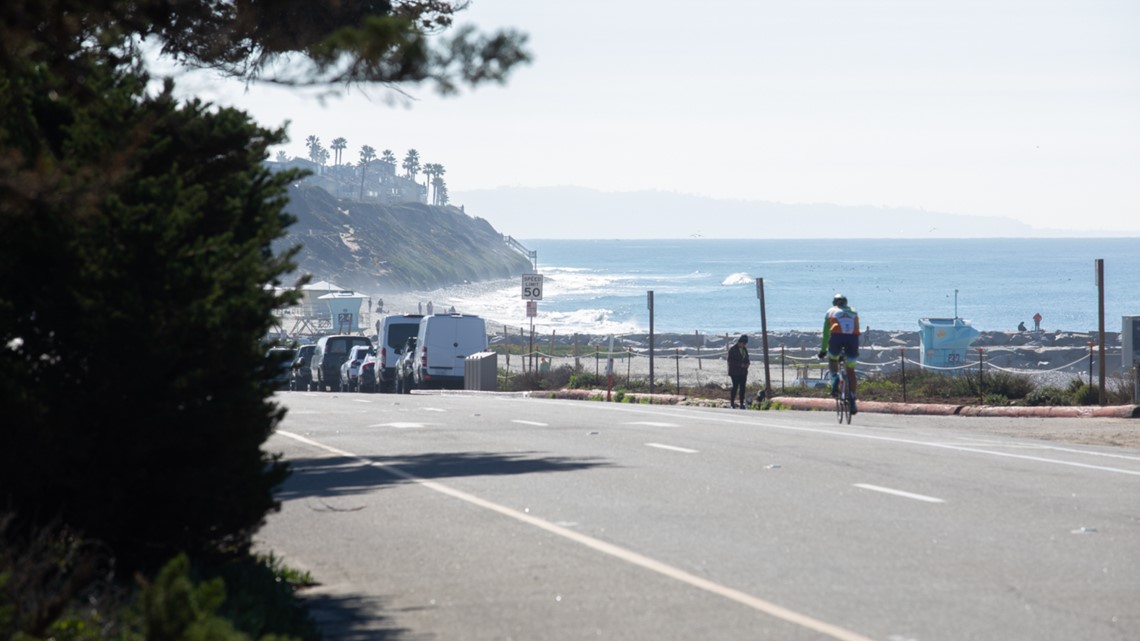
The police department returned the following year in 2018, asking for another $537,000 to expand the surveillance even further. That was approved also, and Schumacher was again the lone dissenter, saying the city’s crime data never supported this expense.
“When we approved the license plate readers, we were at the second lowest point for crime in 30 years,” she said.
Hall was on the opposite end of the spectrum. He said the technology has more than proven itself and “whatever the number is, I think we need to invest it.”
In a recent interview with inewsource, Hall said it’s a powerful tool that has multiplied the department’s workforce many times over. He declined to comment on specific issues raised, saying he would need to review the facts first.
But he wanted to make it clear that “safety is job No. 1 in the city of Carlsbad.”
Blackburn declined to comment. The police department is scheduled to give the City Council an update on its surveillance program this spring.
A multifunctional tool
To justify these expenses, members of law enforcement often marvel over the technology’s capabilities. It tracks license plates, not people, and police have to take an additional step to find out who the plate belongs to — information that isn’t made available to the public. And instead of hiring more officers to run plates, the technology does it automatically and sends alerts when a vehicle of interest is nearby. That saves money, time and resources.
Across San Diego County, records show the hit rate — the number of vehicles of interest detected versus the total number of scans — is less than 1%. For example, cameras in Escondido have scanned more than 8 million license plates, returning 82,000 results — a hit rate of .9%.
But officials say that only tells half the story. This technology can not only help people recover stolen cars or other property just from passive data collection, but during investigations, it can be used to bring justice to victims of violent crime, such as homicide, robberies and even child abduction. Detectives can use it to identify suspects and link them to crime scenes, potentially solving a host of other crimes that might not be captured in the hit rate.
When asked to cite specific cases, though, only four departments responded: the Sheriff, Coronado, Carlsbad and Chula Vista.
Sheriff’s deputies used license plate data to identify the getaway car involved in a homicide, a spokesperson said. They obtained a description and used that to find a nearby vehicle of interest soon after the crime was committed. Without giving specific details, a spokesperson said detectives confirmed it was the getaway car through further investigation and surveillance.
In May 2020, a young man in Coronado posted an ad on OfferUp trying to sell a gold necklace, said Kaye, Coronado’s police chief. Without providing identifying information, Kaye said the man arranged a meeting with a potential buyer on Orange Avenue, but three people showed up and robbed him at gunpoint. A struggle ensued, he was shot and later recovered from his injuries, Kaye said.
During the investigation, officers obtained security footage from a nearby business that showed the car involved — a white Toyota Prius with damage on the driver-side door. Officers were able to analyze that footage to pull partial plate numbers and run them through the database of saved images, which allowed them to identify the vehicle, and later, all three suspects.
Chula Vista police published a report last March — after the department’s practice of sharing data with ICE and CBP came to light — to justify the use of its equipment. The report offered seven examples of cases, without any names or dates, saying there are too many success stories to list them all.
One described a homicide that detectives were investigating. They had a description of the make and color of the suspect vehicle and used license plate readers to find similar cars in the area. Detectives identified the car’s registered owner, who matched the suspect’s description. They found the car and obtained a search warrant to process evidence.
Officers wound up making several arrests for crimes committed in multiple jurisdictions, said Chula Vista Police Capt. Eric Thunberg.
“It’s a sad case, and very tragic for the victim’s families,” Thunberg said in an email. “But it does illustrate how (license plate readers) can assist the department in apprehending dangerous offenders.”
In Carlsbad, police officials have sent the City Council multiple reports to justify the continued expansion of its program.
A 2018 staff report said the license plate reader program had scanned more than 48 million plates halfway through the year. Of those scans, Carlsbad police received 267 reports of stolen or wanted vehicles and license plates. These reports led to the recovery of 65 vehicles, or nearly $460,000 in recovered property. The program had directly contributed to 63 arrests based on stolen vehicle reports.
In addition, officials listed nine examples of cases that had been assisted, including two attempted murders. Both suspects had been caught outside San Diego County — one in a neighboring county and the other in Arizona — after license plate readers registered a hit.
That collaboration with law enforcement partners can sometimes make all the difference, a spokesperson for Carlsbad said.
Police don’t always understand how the technology works
As part of their agreement with Vigilant, agencies select who else can have access to the information collected by its cameras. They can choose to share data with every public safety agency that participates in the network, or on an agency-by-agency basis.
Whatever the decision, the company then generates a “data sharing report,” which is an alphabetical list of every cooperating agency.
inewsource obtained the sharing report of all nine departments in the county and found that police as far away as Cape Coral, Florida, and Saratoga Springs, New York, have access to location data of drivers in San Diego County.
The data sharing is part of the reason why the state auditor’s report expressed concern that the agencies working with Vigilant may not be protecting privacy the way they should. Senate Bill 34 says police are only allowed to share data with public agencies, which are defined as agencies within the state of California.
When asked why police from a small agency in Southwest Florida would need access to location data from drivers in Escondido and La Mesa, representatives from both agencies didn’t answer the question, saying only they weren’t doing anything wrong.
In May, police in Carlsbad revised its department policies, which, among other things, removed nearly every out-of-state agency from its share report. But on the list obtained by inewsource in November, the Las Vegas Metro Police Department was nestled between the departments in La Mesa and Long Beach. It was an error that has since been fixed.
When asked about sharing with out-of-state agencies, Carlsbad officials initially seemed to misunderstand how the data sharing works.
“We manually approve every agency for which we share data,” a spokesperson said in an email. “It is not automatic.”
But that’s not entirely accurate. Departments do have to manually approve who receives data, but that’s what the sharing report is for. Once an agency is listed on that report, it has access to all of the data made available to it, said Talla, the ACLU attorney.

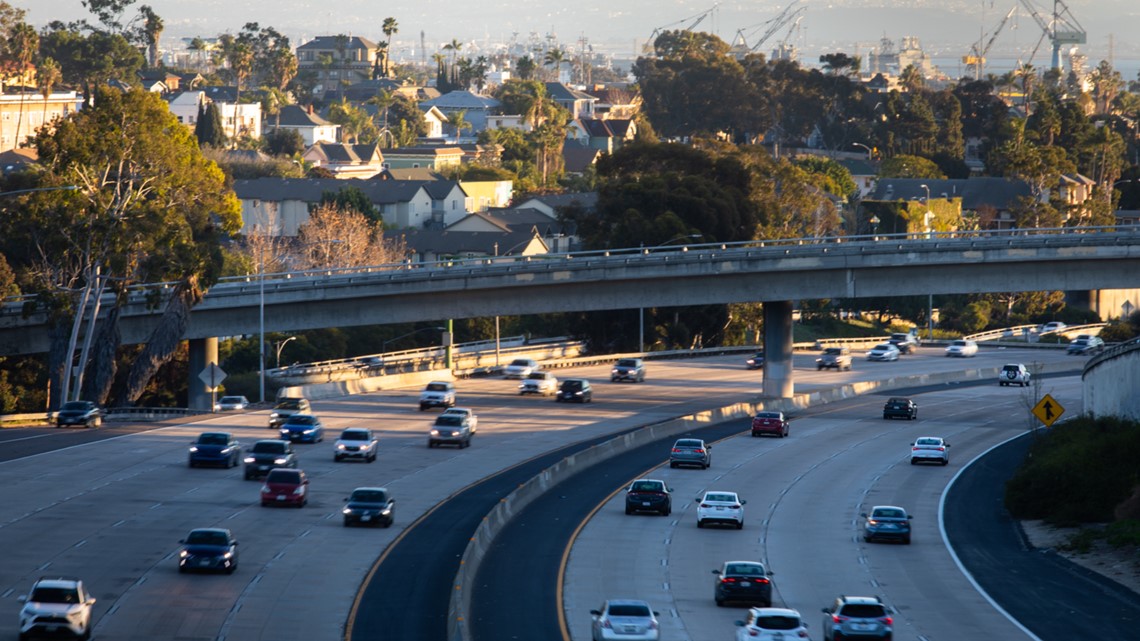
“Law enforcement agencies that use the automated license plate reader systems, as well as other types of mass surveillance technology, have difficulty understanding how the technology works and what they are agreeing to and how the data is stored and shared,” she added.
The state auditor’s report concluded the same thing. Members of three agencies involved with the audit had “difficulty understanding when and how sharing occurred,” the report said.
‘Now is not the time to take away tools’
Officials in Chula Vista had to face a moment of reckoning. In December 2020, a reporter found ICE and CBP listed on the police department’s share report — a potential violation of two state laws, Senate Bills 34 and 54. The first prohibits sharing with out-of-state or federal agencies, and the other prohibits coordinating with federal immigration officials — also known as the sanctuary law.
Reaction to the coverage was immediate. Residents started contacting city officials in droves, forcing them to hold multiple public meetings and a community forum, where officials sat and listened to questions and complaints from residents.
“The Chula Vista Police Department is sensitive to the concerns of our undocumented community,” Chief Roxana Kennedy said during a City Council meeting in March.
She asserted that the program complies with state law, and said, “hearing concerns from our community that sharing data with ICE and Border Patrol did not echo the spirit of (the sanctuary law) caused us to stop and to reevaluate, and we immediately suspended sharing data with both agencies until further evaluation and examination of our program.”
Since then, the department has dedicated a special page on the city’s website that provides a number of documents — presentations to the City Council about the program, staff reports, quarterly audit reports and a new data sharing report, which includes only in-state agencies.
Amid the fallout, Kennedy pleaded with council members not to take the equipment away. She rattled off double-digit increases in crime to drive the point home, even though crime across San Diego County remains at all-time lows.
“Chula Vista continues to be one of the safest cities in the county, we have an obligation to keep it that way,” Kennedy said during the council meeting in April. “Now is not the time to take away tools that have been proven effective, and are part of the reason for our public safety success.”
Council members ultimately voted to keep the equipment for at least another year.
inewsource is a nonprofit, independently funded newsroom that produces impactful investigative and accountability journalism in San Diego County. Learn more at inewsource.org.


